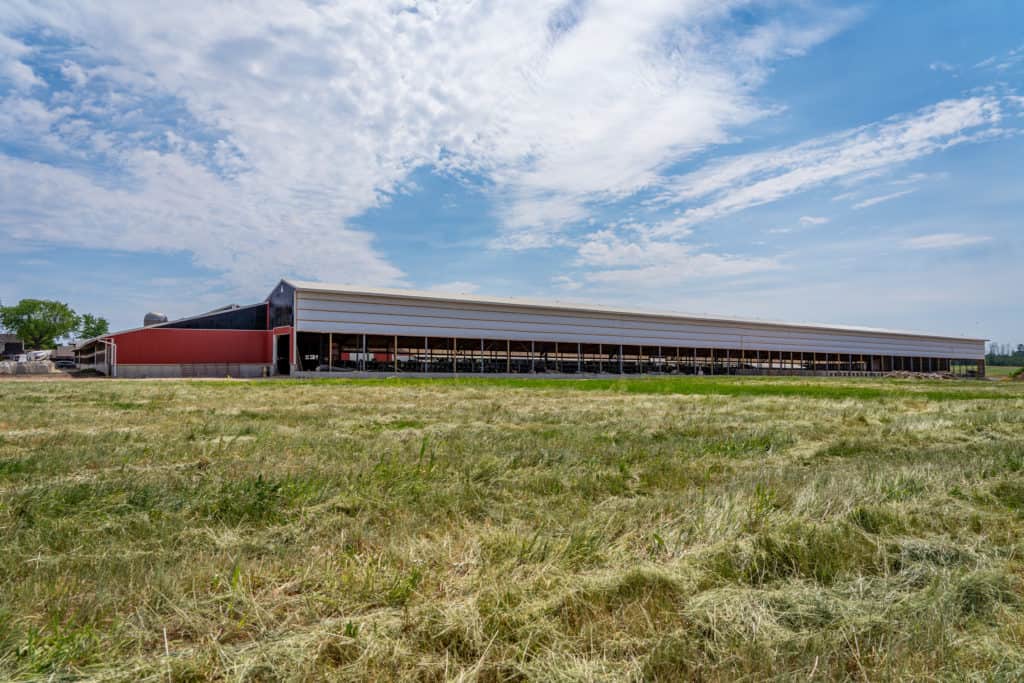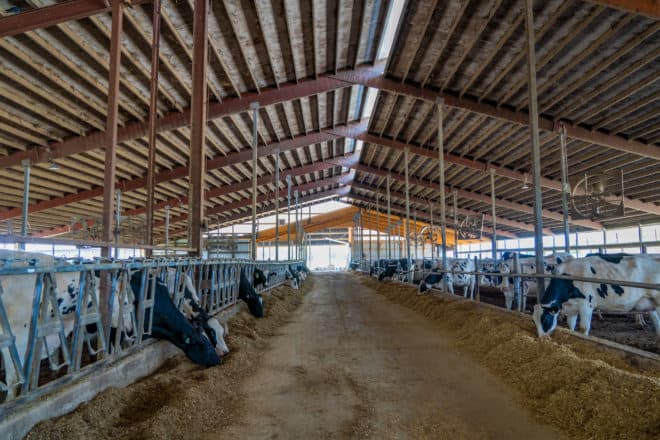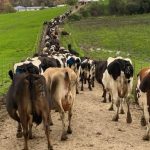
There may be a prevailing belief among nonfarming consumers that dairy cows with grass-stained knees, roaming around in pastures, are happier than their barn-contained cousins.
But are these gentle ruminants unhappy when raised conventionally in barns – the majority of dairy operations, according to the U.S. Department of Agriculture – as opposed to their cousins in grazing operations?
The numerous experts at universities, government agencies and independent organizations who ask these questions and study the answers – not in terms of “cow happiness,” but “cow comfort” – use certain measures to gauge a dairy cow’s overall well-being.
Comfortable cows, according to University of Minnesota Extension dairy specialist Marcia Endres, produce more and better-quality milk, are reproductively efficient, and experience overall health – and a cow’s housing and management affect all those things, Endres said in “Cow Comfort and Why It Matters.”
“Today’s cows are like high-performance athletes, which makes them more sensitive to negative aspects of their environment or management,” Endres wrote.

In the freestall dairy barn at Brey Cycle Farm, care of the herd is research based, said Lauren Brey, a partner in the family farm with her husband, Jacob; and her brother-in-law and sister-in-law, Tony and Moriah.
Lauren calls their barn “new-style farming.” The Holsteins are free to walk around, lie down on their sand beds, and eat and drink as they choose. They go to the milking parlor three times a day, and when the cows leave, the employees arrive to scrape the alleys and beds and refill the feed and water.
The Breys’ dry cows (those on vacation until they have their next calves) graze pasture, and they have their Angus/Holstein crossbred beef animals and heifers (young females that have not calved yet) on a rotational grazing system on 140 acres. But the milking herd is kept inside an open-structure barn that has fresh air flow, shading, fans for the summer to achieve the cooler temperatures that dairy cows need, and curtains for winter protection.
If milk production is a sign of cow comfort, then the Breys’ cows would seem to have it. The daily milk production per Wisconsin cow is an average of 8.1 gallons, according to the Wisconsin Agricultural Statistics Service. Jacob said their cows give an average of 10 gallons of milk every day.
And if reproductive efficiency is also a sign of cow comfort, they seem to have that, too: Their herd has grown annually from about 100 in 2016 to 650 today.
“As the herd grows, we grow,” Lauren said.























